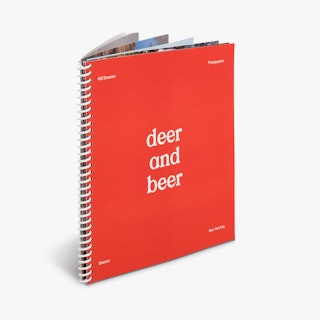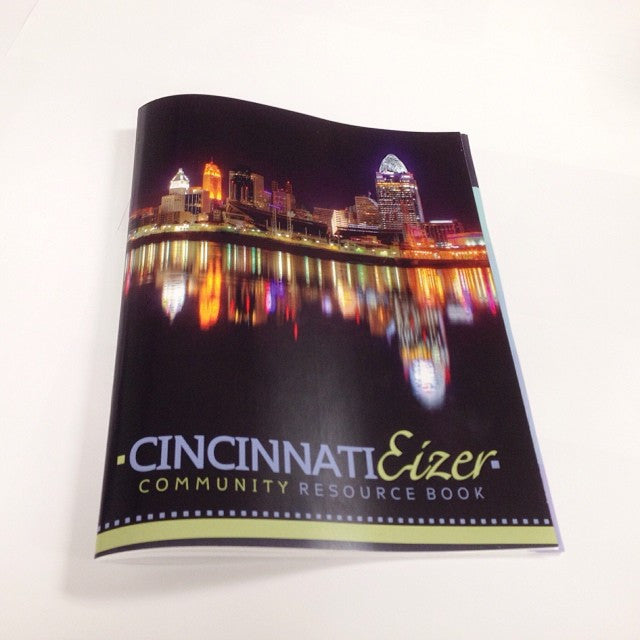The Ultimate Guide to Custom Booklet Printing for Small Businesses
The Ultimate Guide to Custom Booklet Printing for Small Businesses
Blog Article
The Crucial Overview to Recognizing Brochure Printing Options and Techniques
The procedure of booklet printing involves several factors to consider that can significantly affect the end product. From selecting the appropriate format and dimension to understanding the subtleties of binding approaches, each selection plays a crucial duty. In addition, factors such as paper stock and printing techniques further influence the effectiveness of the booklet. As one browses these choices, it becomes imperative to comprehend exactly how they interconnect and what that indicates for the total result.
Comprehending Booklet Dimensions and layouts
When considering booklet printing, understanding the various styles and dimensions readily available is vital for accomplishing the wanted discussion. Pamphlets can be created in various formats, consisting of saddle-stitched, spiral-bound, and perfect-bound, each offering unique benefits. Typical sizes range from typical letter (8.5 x 11 inches) to smaller sized choices like A5 (5.8 x 8.3 inches), permitting flexibility based upon content and target audience.Selecting the proper size can affect both the layout and viewers engagement. Larger sizes could fit aesthetically driven web content, while smaller sized layouts might be extra user-friendly and mobile. Additionally, the variety of pages affects the selection of binding method, as thicker booklets might require sturdier bindings. Eventually, understanding these aspects permits a much more customized approach, making sure that the end product lines up with the intended message and aesthetic, improving the overall efficiency of the communication.
Choosing the Right Paper Stock

Binding Techniques: Options and Factors To Consider
When it pertains to binding approaches for brochures, several choices are available, each with unique advantages. Saddle stitch binding supplies an economical remedy for thinner booklets, while ideal binding techniques supply an even more sleek look for thicker publications. Wire-O binding stands apart for its sturdiness and ease of usage, making it optimal for documents that require versatility.
Saddle Stitch Binding
Saddle stitch binding supplies a useful and cost-efficient remedy for putting together booklets, making it a popular selection among organizations and authors. This binding approach includes folding sheets of paper in fifty percent and stapling them along the fold line, creating a organized and cool look. Usually ideal for pamphlets with a reduced web page matter, saddle stitching is ideal for magazines, brochures, and instructional products. The simplicity of this strategy enables quick manufacturing and is typically favored for short runs or promotional products. Nonetheless, it is vital to note that saddle stitch binding may not appropriate for thicker pamphlets, as the spine may not stand up under increased weight. Overall, it continues to be a trustworthy alternative for numerous printing projects.
Perfect Binding Strategies
Perfect binding is an extensively made use of technique that supplies a expert and sleek surface to pamphlets and publications. This method entails gluing the web pages with each other at the spinal column utilizing a strong adhesive, enabling for a tidy side and the capacity to hold a larger number of web pages compared to saddle sewing. Perfect binding is especially ideal for thicker brochures, such as brochures and yearly records, where a strong, flat spine is preferred. Furthermore, it supplies the option for a published cover that can be made to improve visual allure. Considerations such as web page matter, paper weight, and the intended use of the brochure must be taken into account, as they can affect toughness and overall quality.
Wire-O Binding Alternatives
Wire-O binding, understood for its durability and adaptability, supplies an outstanding option for pamphlets that need very easy web page turning and a specialist look. This binding method uses a collection of steel loopholes that hold pages safely, permitting them to lie level when open. It is particularly suitable for guidebooks, presentations, and directories due to its robust nature. Wire-O binding is readily available in different colors and sizes, fitting various web page matters and thicknesses. Furthermore, it allows the addition of covers and tabs, enhancing the brochure's general visual. Considerations for Wire-O binding consist of the selection of cable shade, the size of the loops, and the degree of customization preferred, all of which can greatly affect the final product's look and performance.
Digital vs. Offset Printing: Which Is Best for You?
When picking a printing technique for brochures, comprehending the differences in between digital and counter printing is necessary. Digital printing makes use of modern-day innovation to create high-quality prints swiftly and cost effectively, making it ideal for brief runs or tasks calling for fast turnaround times. It enables customization, providing the ability to print on-demand with very little waste.In contrast, counter printing is a traditional technique that stands out in producing huge quantities with constant quality. It entails moving ink from a plate to a rubber covering, then to the paper, which leads to exact details and lively shades. Offset printing generally calls for longer arrangement times and is more cost-effective for larger volumes.Ultimately, the choice between digital and offset printing depends on project requirements, budget plan, and preferred amount. For tiny, time-sensitive projects, digital could be the very best option, while countered might be more effective for larger, high-quality manufacturings.

Creating Your Brochure: Tips and Best Practices
When making a brochure, cautious focus to format, font style option, and color usage can substantially improve its efficiency. A well-structured format overviews the visitor's eye, while suitable font styles guarantee readability and communicate the wanted tone. Furthermore, effective use color can evoke feelings and emphasize essential info, making the total style extra impactful.
Selecting the Right Layout
Just how can one effectively choose the appropriate design for a booklet? Initially, it is necessary to examine the booklet's objective and target audience. A tidy, organized design improves readability and engagement. Making use of a grid system can assist in straightening elements continually, producing a specialist appearance. In addition, integrating visual power structure through differing dimensions and positionings of pictures and message can direct the viewers's eye and emphasize vital information. It is additionally important to leave enough white space, which stops congestion and permits far better emphasis. Lastly, checking various designs via mock-ups can provide understanding right into how the style executes in real-world scenarios, guaranteeing that the end product fulfills both practical and aesthetic needs.
Picking Appropriate Font Styles
A well-chosen font style can considerably boost the overall design of a booklet, matching the design and strengthening the material's message. The choice of typefaces need to take into consideration readability, specifically for body message, as it assures the details is accessible to all readers. Sans-serif fonts are frequently chosen for digital formats, while serif fonts can lend a traditional feel in published products. It's a good idea to limit font options to two or three to maintain aesthetic comprehensibility. Furthermore, font style dimension plays an next essential role; headings should be not frustrating however unique, while body message should fit for analysis. When selecting fonts, placement with the booklet's style and target market is crucial for reliable communication and aesthetic allure.
Efficient Use Shade
Shade acts as an effective tool in booklet style, forming understandings and guiding reader emotions. It can stimulate feelings of calmness, trust fund, or excitement, depending upon the tones selected. Developers need to consider color concept concepts, ensuring that the selected scheme straightens with the booklet's message and target audience. As an example, utilizing cozy shades like red and orange can create urgency, while cooler tones like blue and eco-friendly foster tranquility.Additionally, contrast plays an important function; corresponding shades can boost readability and aesthetic appeal. Uniformity in shade usage across pages additionally enhances brand name identification and communication. Eventually, efficient shade application not only catches interest however likewise reinforces the booklet's purpose, making it a crucial element of successful design.
Finishing Touches: Coatings and Special Results
While several consider the material and design of a brochure the most important elements, the ending up touches, such as coatings and unique results, play an important function in enhancing its overall allure. Coatings can supply security and longevity, making certain that the booklet holds up against damage. read the full info here Matte surfaces provide a sophisticated, non-reflective surface area, while shiny coverings can make colors show up more vibrant and distinctive. Special results, like embossing or foil marking, include a tactile measurement that can create a remarkable perception. These techniques can highlight details areas, accentuating important info or creating aesthetic interest. In addition, UV finishing can provide a high-shine surface that elevates the general look.Together, these ending up touches not only boost the booklet's visual but likewise communicate expertise and attention to information, ultimately leaving an enduring influence on the visitor.
Price Considerations for Brochure Printing
Recognizing the various expense factors to consider for booklet printing is necessary for companies and businesses aiming to enhance their spending plans. Key aspects affecting costs include the option of paper, ink, and binding methods. Better products, such as premium paper or specialized inks, generally boost the total expenditure. In addition, the size Click Here and web page matter of the pamphlet play a substantial function; bigger pamphlets call for even more sources and time to produce.Another vital factor to consider is the printing method, whether electronic or countered, as each has its very own rates framework and viability for various amounts. Organizations should also factor in design costs, which can vary based upon intricacy and making use of specialist solutions. Inevitably, delivery and handling costs can include in the overall, specifically for big orders. By examining these aspects, companies can make educated decisions that align with their financial capacities while attaining the wanted top quality in their printed materials.
Frequently Asked Inquiries
What Are the Ecological Impacts of Pamphlet Printing?
The ecological effects of brochure printing include logging from paper manufacturing, carbon discharges from transportation, and waste generation from discarded products - Booklet Printing. Sustainable practices, such as using recycled paper and green inks, can minimize these impacts
How Can I Ensure Shade Accuracy in My Booklet?
To assure color precision in a brochure, one ought to utilize adjusted monitors, use expert color accounts, conduct examination prints, and choose top quality printing solutions that use color matching and proofing alternatives for best outcomes.
What Is the Common Turnaround Time for Brochure Printing?
The typical turn-around time for booklet printing differs depending on the intricacy and quantity - Booklet Printing. Normally, it ranges from a couple of days to two weeks, affected by factors such as publishing methods and completing requirements
Are There Minimum Order Quantities for Pamphlet Printing?

Can I Publish Pamphlets in Numerous Languages?
Printing booklets in multiple languages is possible. Lots of printing solutions supply alternatives for multilingual or bilingual layouts, enabling effective communication. Cautious planning assurances that create components suit numerous languages without endangering readability or visual appeals. Furthermore, aspects such as paper stock and printing methods additional influence the efficiency of the booklet. When considering booklet printing, understanding the various formats and dimensions offered is crucial for achieving the desired presentation. When choosing a printing technique for pamphlets, recognizing the differences between digital and offset printing is vital. Furthermore, the dimension and page count of the pamphlet play a substantial function; larger pamphlets call for more resources and time to produce.Another vital factor to consider is the printing strategy, whether electronic or countered, as each has its very own prices framework and viability for various quantities. The environmental effects of brochure printing consist of logging from paper manufacturing, carbon exhausts from transport, and waste generation from disposed of materials.
Report this page